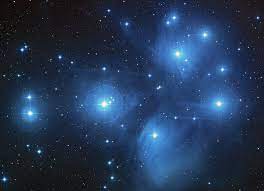The Interstellar Medium: Understanding the Gas and Dust Between the Stars.
The space between stars is not empty but is filled with a diffuse mixture of gas and dust called the interstellar medium (ISM). This material plays a critical role in the formation and evolution of stars and planetary systems, as well as in the processes that shape galaxies. Understanding the properties and behavior of the ISM is therefore a key area of research in astrophysics.
The Composition of the Interstellar Medium
The ISM is composed primarily of hydrogen, with smaller amounts of helium and other elements such as carbon, nitrogen, and oxygen. This material exists in two primary phases: a cold, dense phase known as molecular clouds, and a warm, diffuse phase called the intercloud medium.
Molecular clouds are the sites of star formation and can have densities up to a million times greater than the average density of the ISM. The cold temperatures and high densities in these clouds allow hydrogen atoms to combine into molecules, primarily molecular hydrogen (H2), as well as other molecules such as carbon monoxide (CO) and ammonia (NH3).
The intercloud medium, by contrast, is much less dense, with densities on the order of one atom per cubic centimeter. This material is ionized by the ultraviolet radiation from nearby stars, and its temperature is typically around 10,000 Kelvin.
Dust in the ISM
In addition to gas, the ISM also contains small dust grains, typically a few tenths of a micron in size. These grains are primarily composed of carbon and silicates and can play an important role in the chemistry and physics of the ISM.
Dust grains can absorb and scatter light, which can affect our observations of distant objects. They can also catalyze chemical reactions, allowing molecules to form on their surfaces that would not otherwise be able to form in the gas phase. This can lead to the formation of complex organic molecules that may be important for the origins of life.
The Dynamics of the ISM
The ISM is not static but is constantly in motion, with gas and dust being pushed and pulled by various physical processes. These processes include shockwaves from supernova explosions, radiation pressure from stars, and magnetic fields.
Supernova explosions, in particular, are a major driver of ISM dynamics. When a massive star reaches the end of its life, it explodes in a supernova, releasing an enormous amount of energy and ejecting material into the surrounding ISM. This can trigger the formation of new stars and can also stir up the ISM, causing it to mix and heat up.
The Importance of the ISM
The ISM plays a critical role in many areas of astrophysics. Its composition and dynamics can affect the formation and evolution of stars and planetary systems, as well as the chemical evolution of galaxies. Understanding the ISM is also important for interpreting observations of distant objects, as the ISM can absorb, scatter, and distort light from background sources.
The study of the ISM is a vibrant field of research, with ongoing observations and modeling efforts aimed at better understanding the properties and behavior of this crucial component of the cosmos.






0 Comments:
Post a Comment
Subscribe to Post Comments [Atom]
<< Home